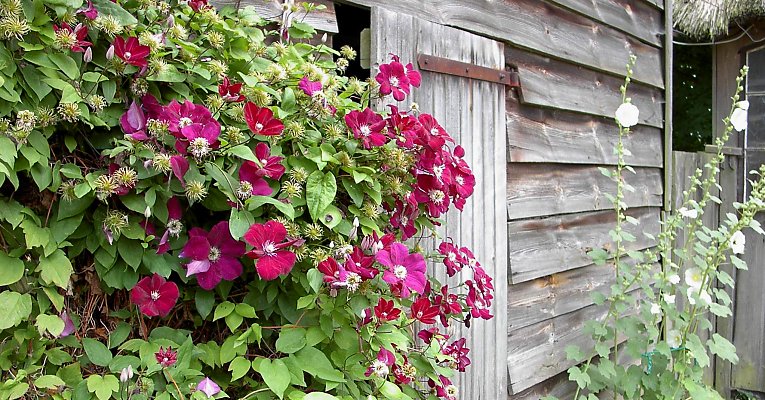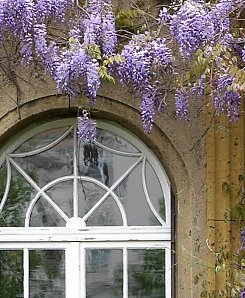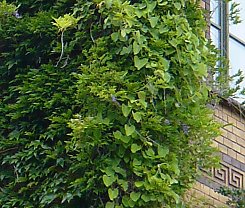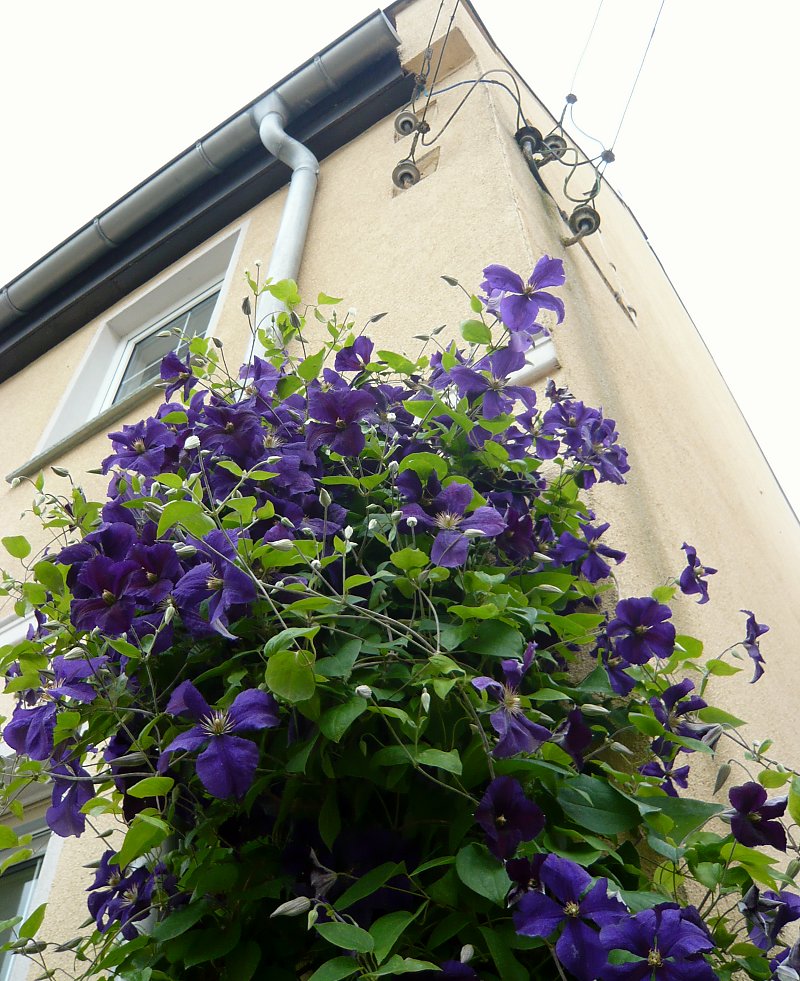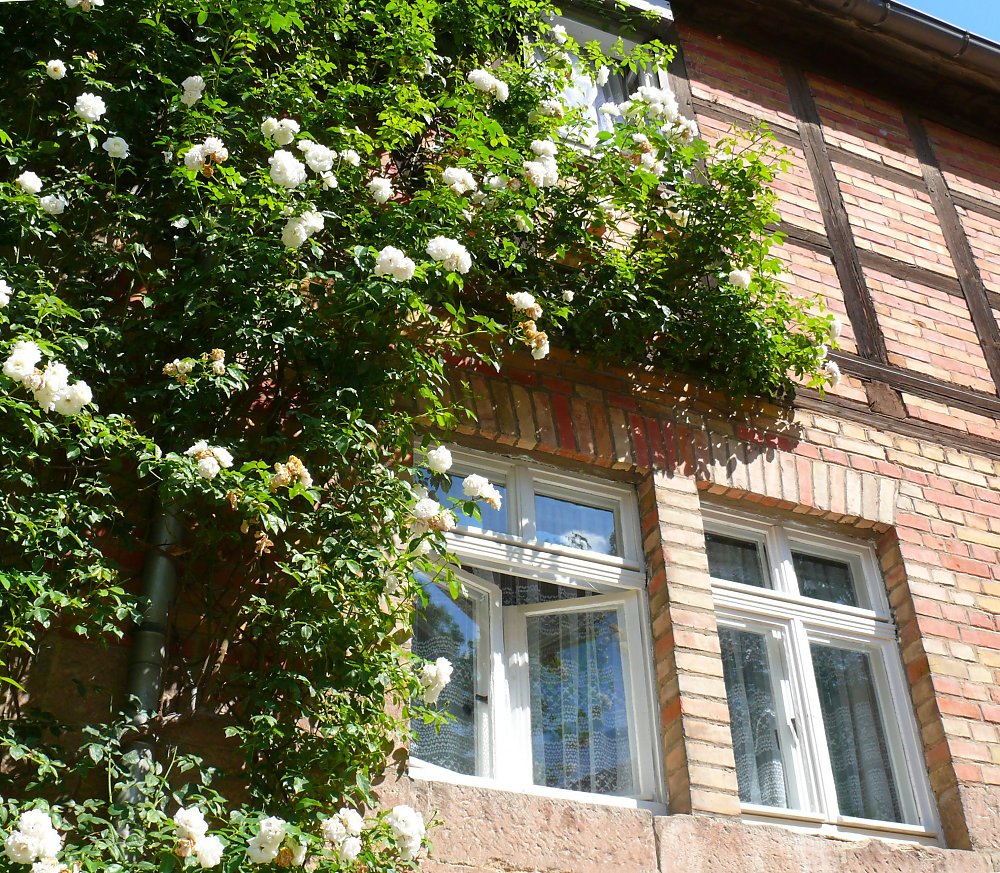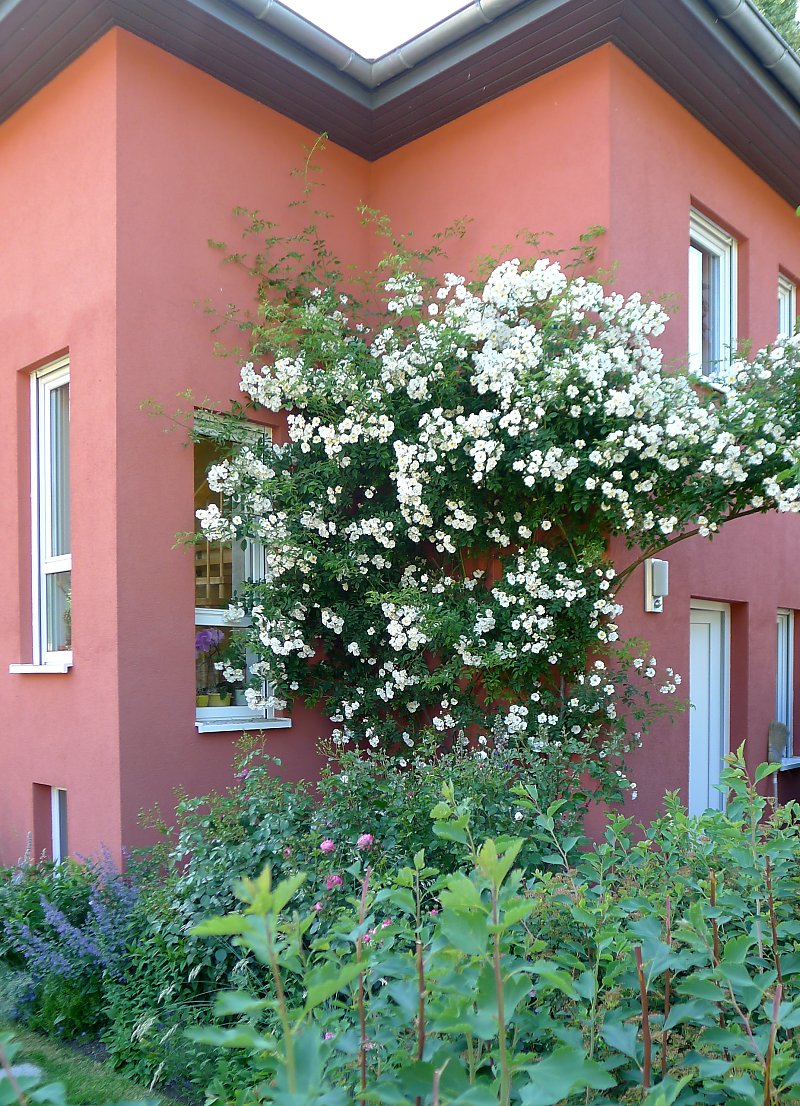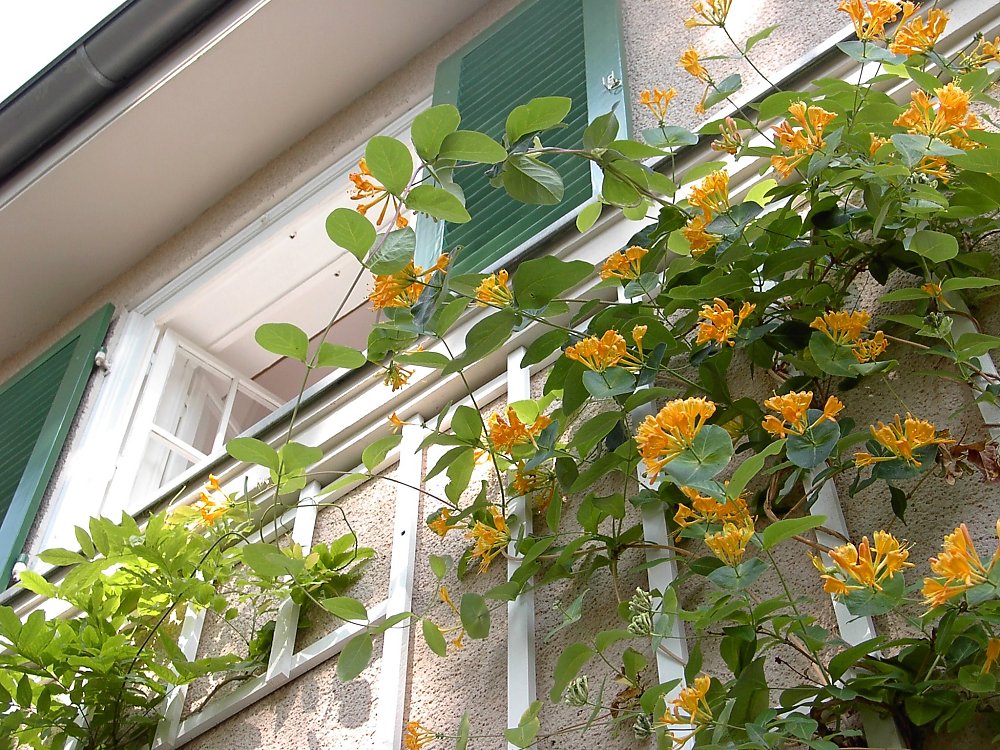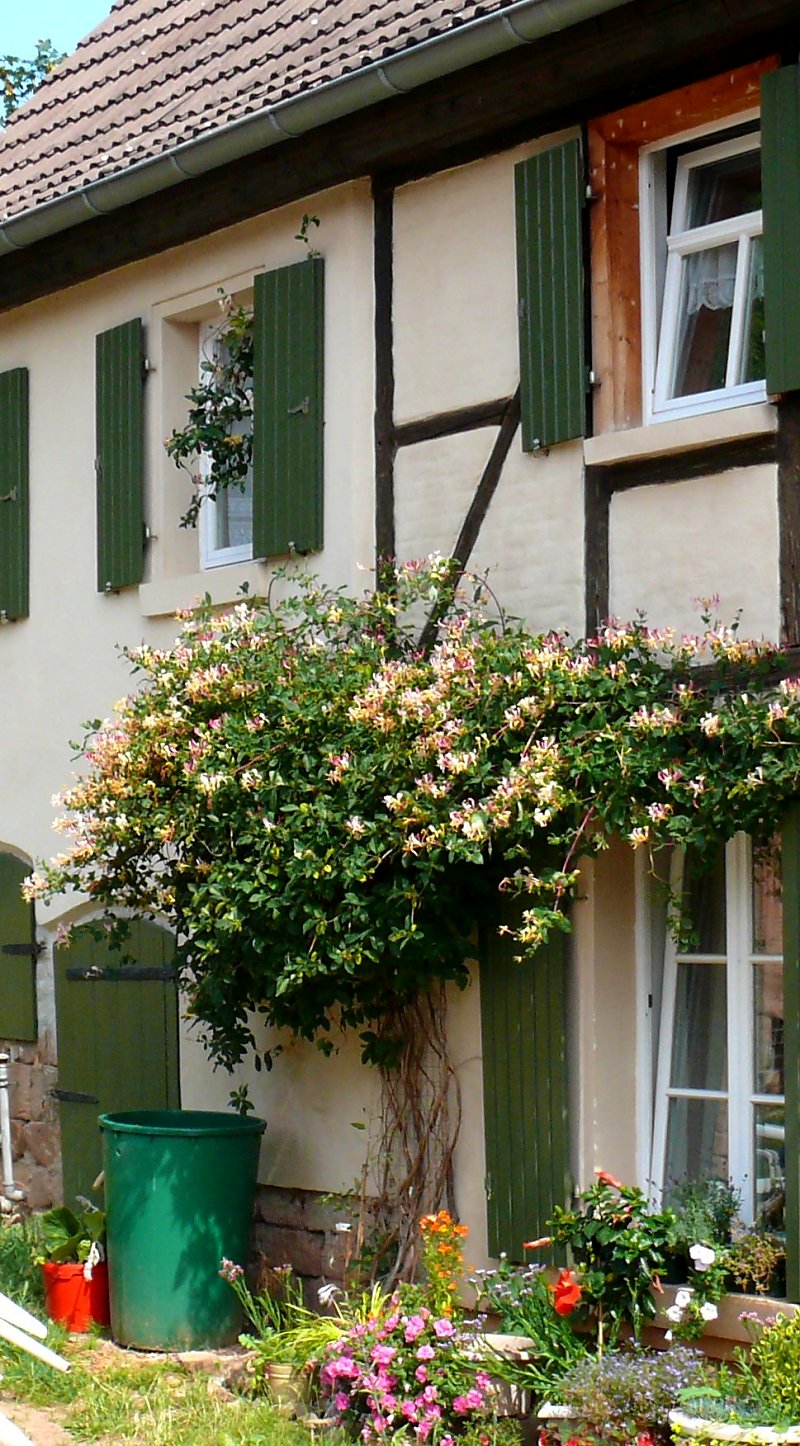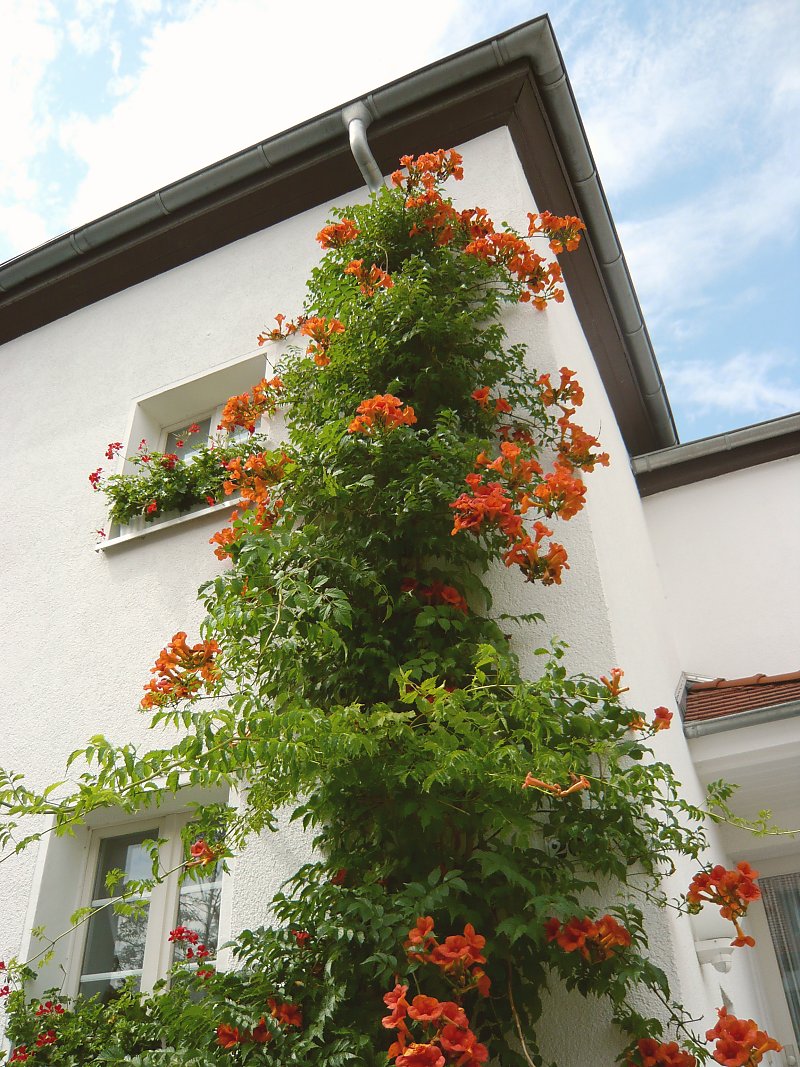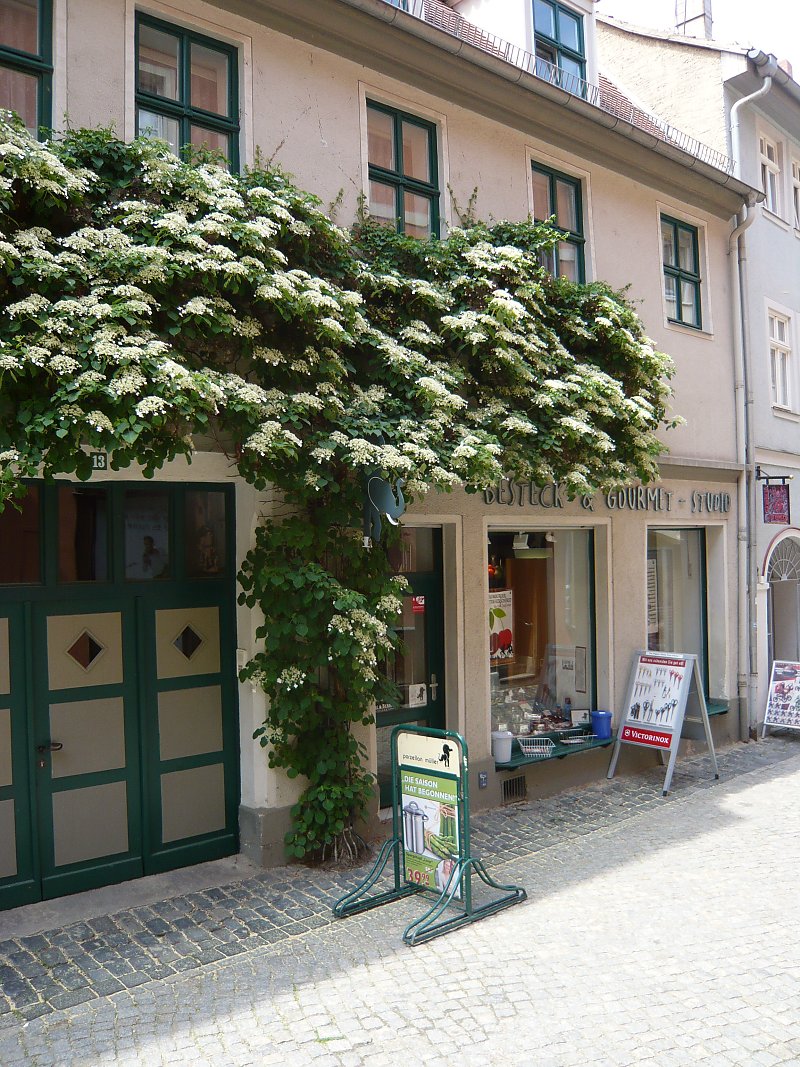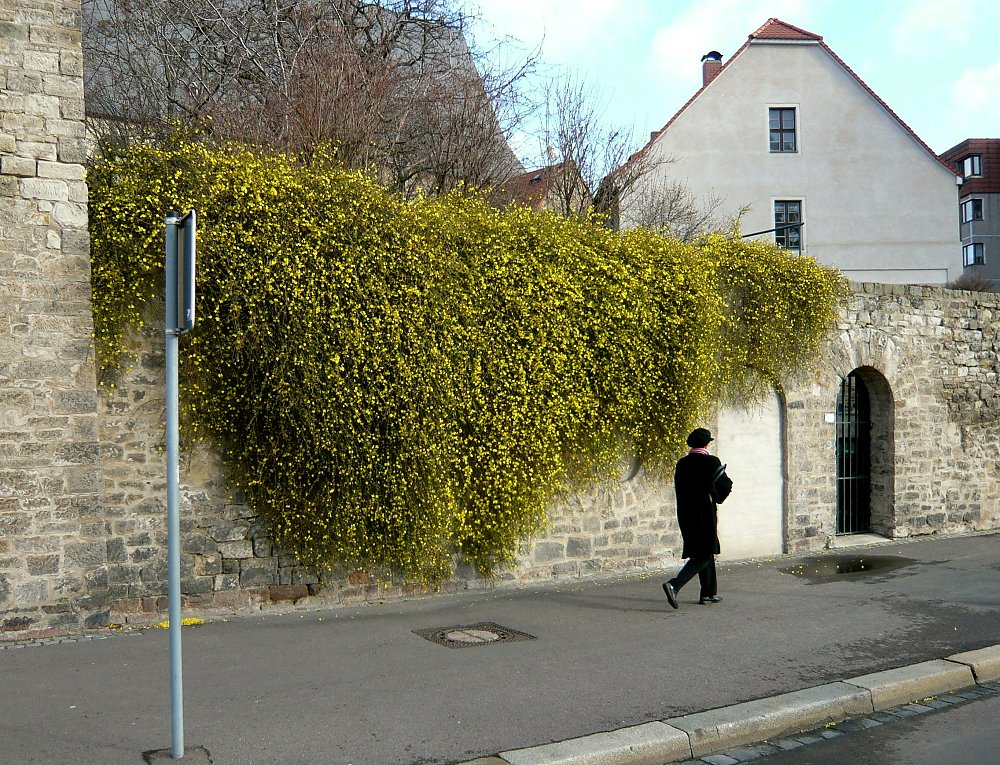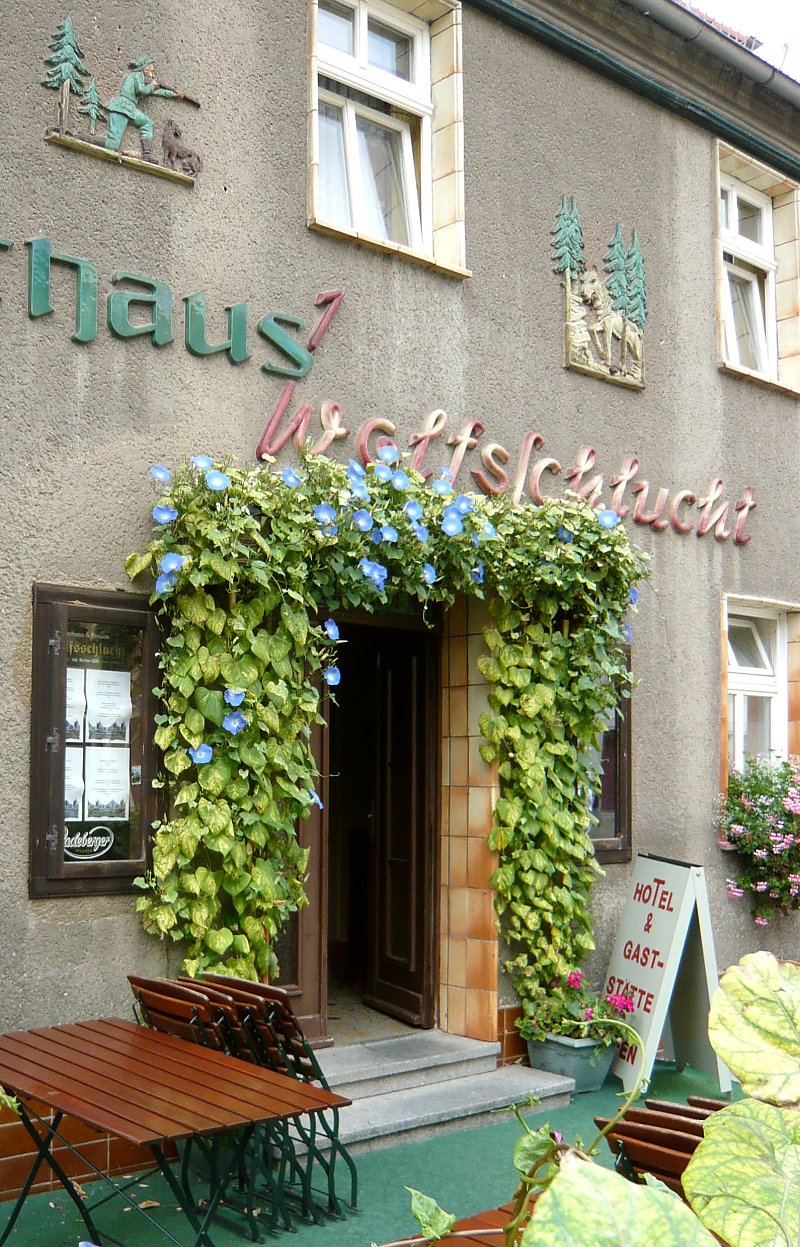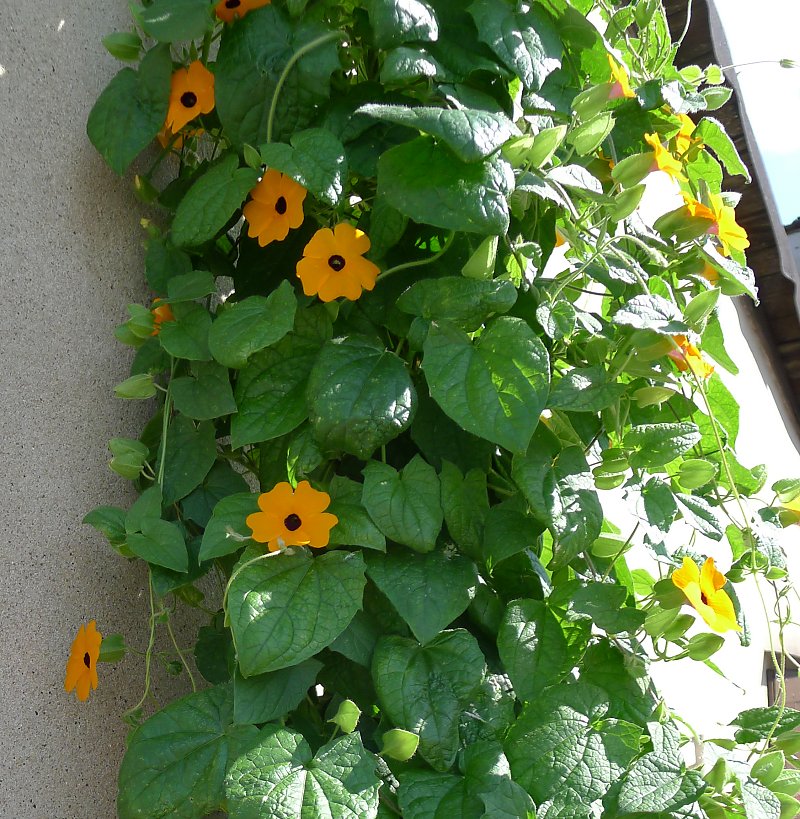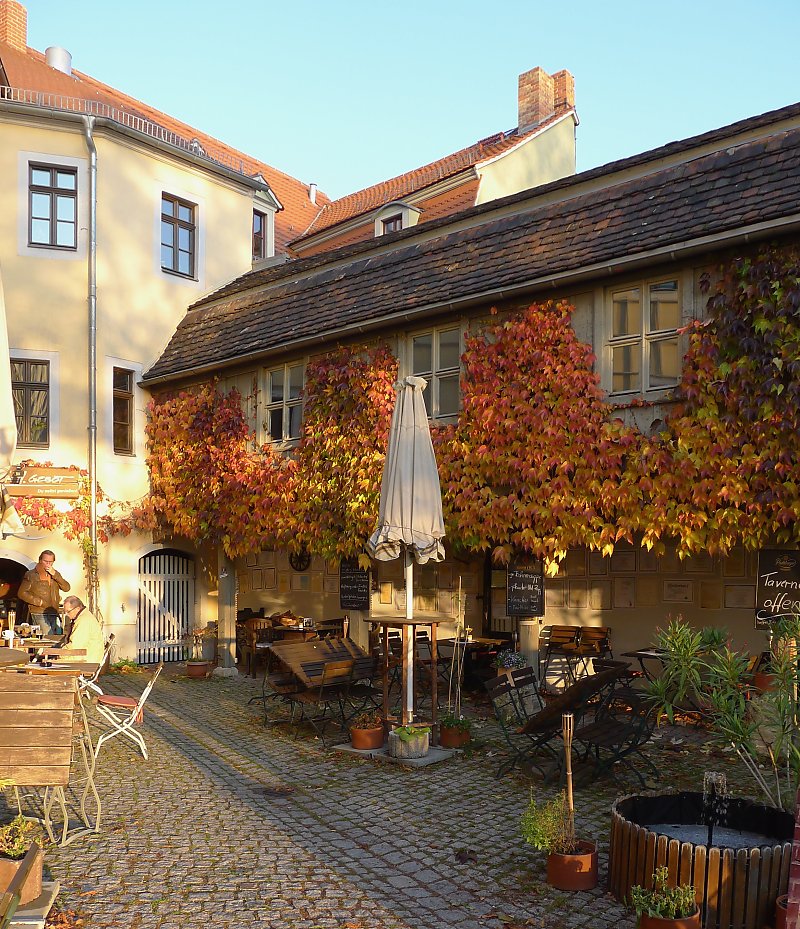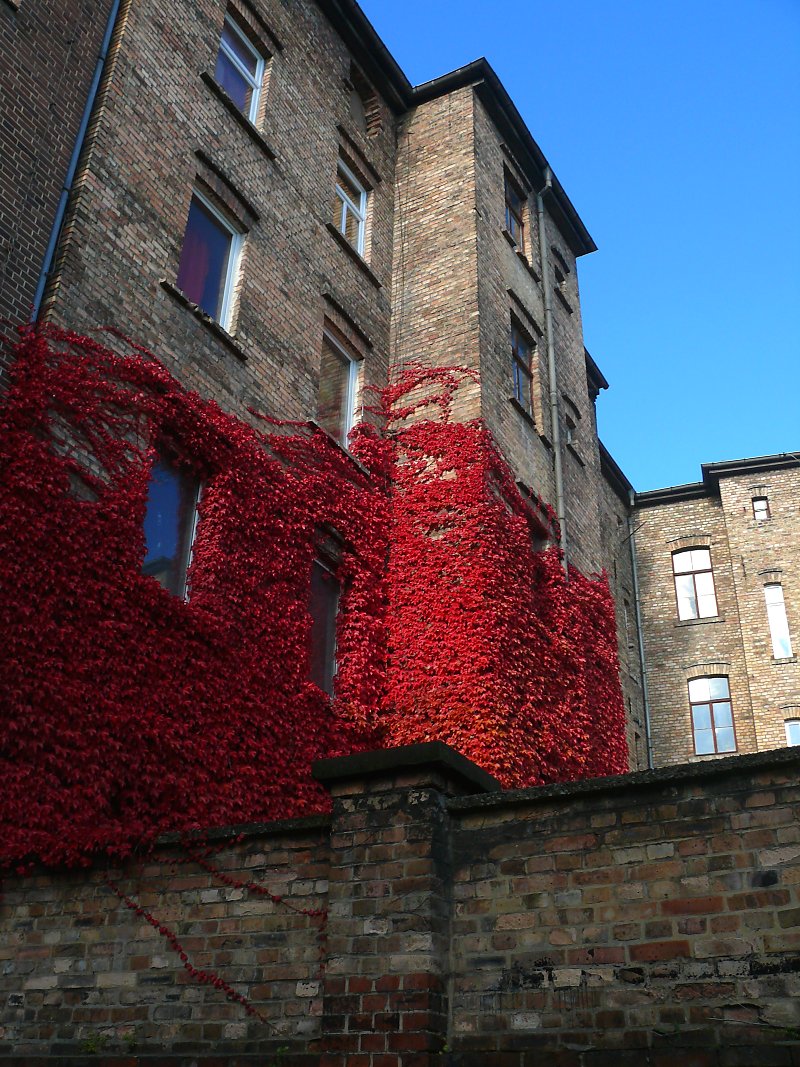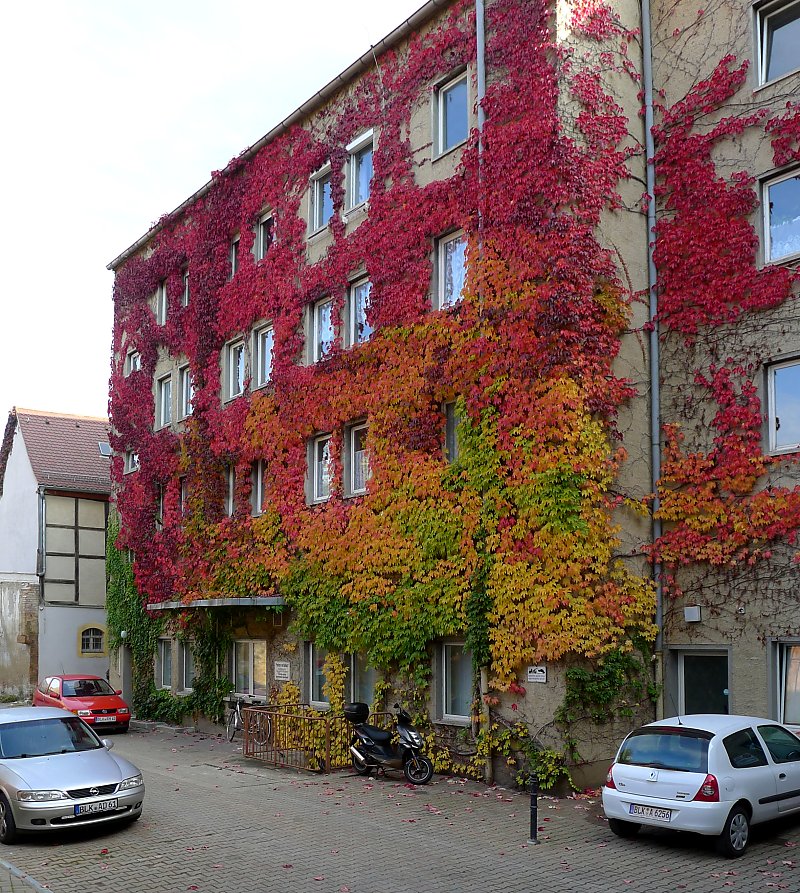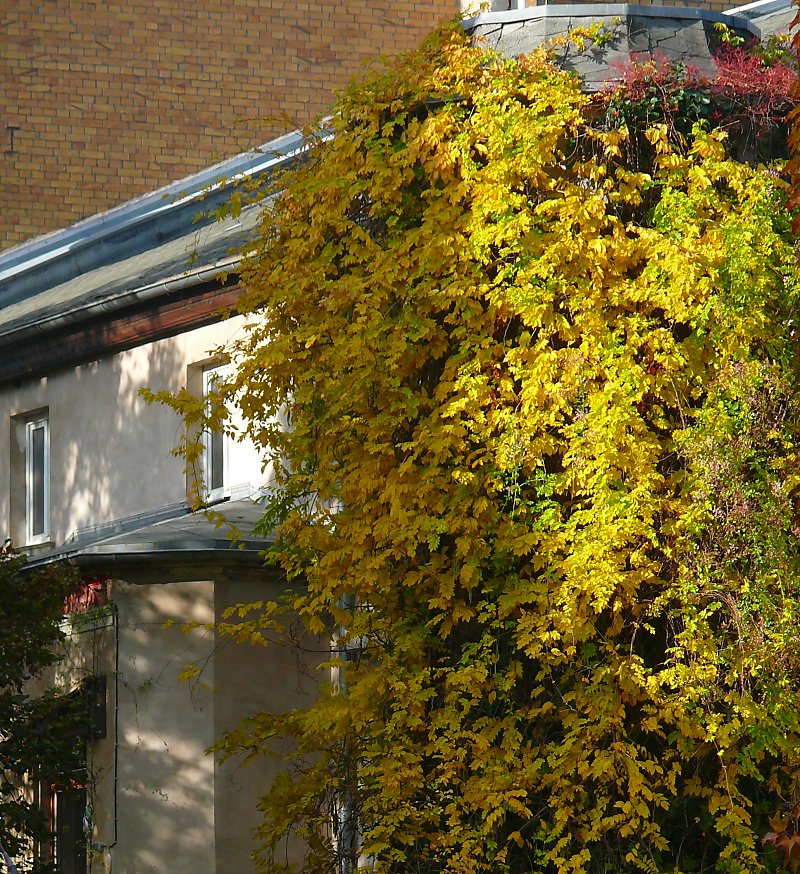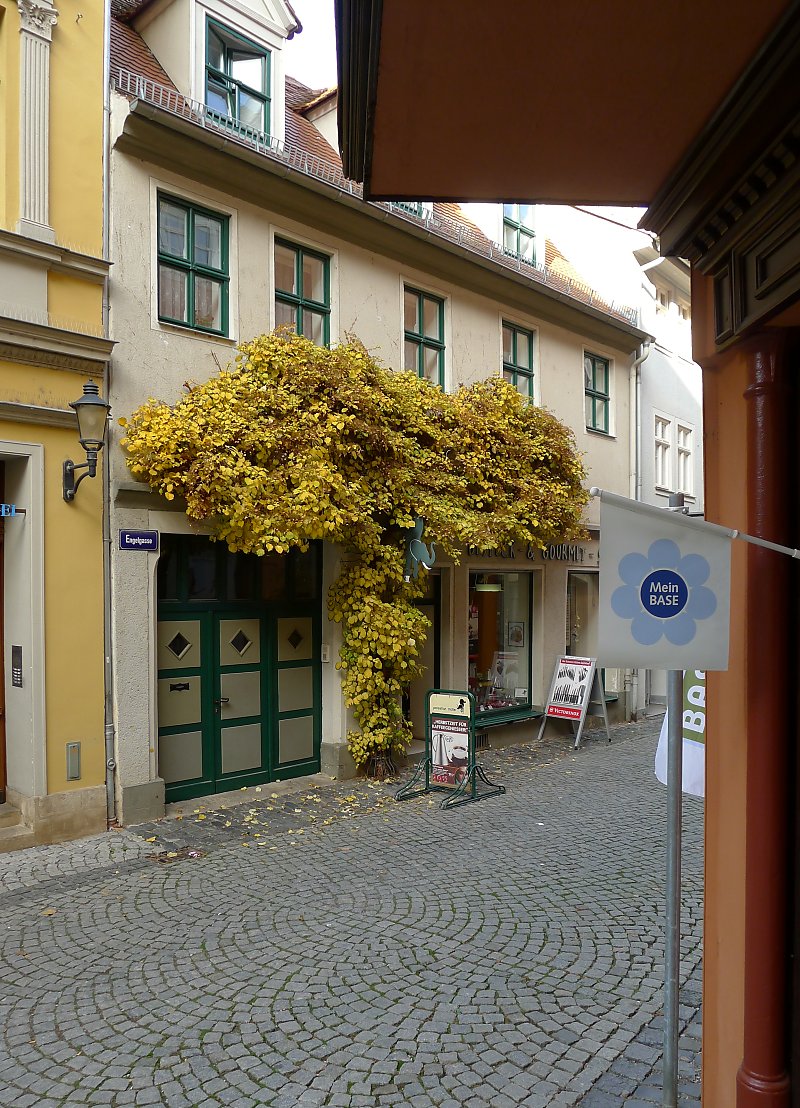Colours in the Facade Garden
Facade greening brings colour to your buildings and walls. Thank not only the flowers; leaves in their autumn hues and the fruit 'jewelry' that some plants wear are also major players. Alone the spectrum of green tones in a leaf wall are a source of contrasts, and so lovely! It is important to remember of your vertical 'garden': without regular care and maintenance as with any garden, all tips are 'wastepaper' (as we say in German).
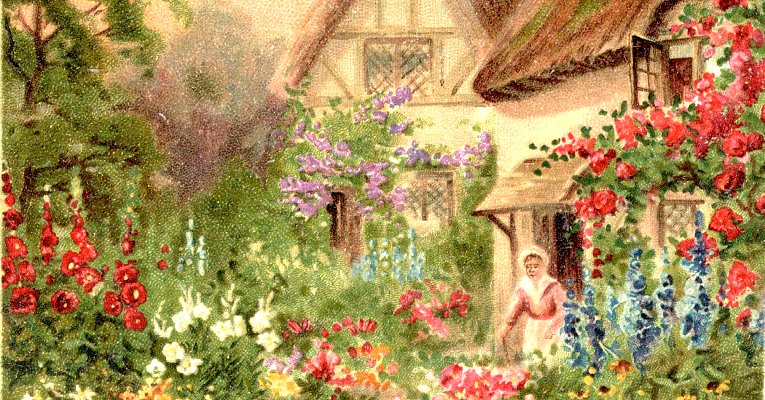
Flowers
Rose,clematisand wisteria offer the contrasting element to wild vines-- they bear beautifully coloured flowers! Espalier fruit often produces fruits *and* flowers, and with different plant combinations, a quite individual facade garden can be created. The selection of suitable climbing plants is determined by flower colour and duration. Rambling roses, for example, bloom wonderfully, but most trellis plants present for only 2 -3 weeks a year. Annuals, however, often blossom for months ('continuous bloomers') when given proper fertilisation and water. Scent and plant location also factor in, as does the health of the plant: robust varieties (especially of rose and clematis) will keep the garden cities alive and not let them die out as they have in the past.
Autumn Leaves
In autumn many leaves change colour before they fall off the trees, and house walls become resplendent in glorious colour! Climbing hydrangea, grapevine, trumpet vine, Dutchman's pipe, and also wisteria often turn to a spectrum of amber-yellow-gold, while reds and crimsons will cameo primarily on sunny walls, especially with species of the genus Parthenocissus, like Boston ivy, Virginia creeper, and thicket creeper. Some plants will change colour already in the summer months, with white, yellow, or pink hues variegating on the leaves ~ as with various types of ivy, wintercreeper and kiwi. The facade garden can be designed for that colourful effect.
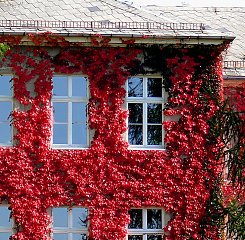
Three-lobed Boston Ivy
Fruit-'Jewels'
Some climbing shrubs present brilliantly coloured fruit, e.g. bittersweet, scarlet firethorn and cotoneaster. These colours will remain even through winter. The grey seed tufts of clematis, for example, can still provide contrasts in the facade garden after the blossoming time is over.
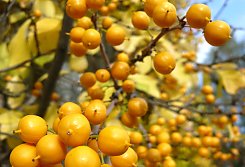
Bittersweet with ornamental berries-- nature's jewels...
Green Tones in the Facade Garden
Dramatic or strident chromatic contrasts are not always called for; shades of colour are also interesting, e.g. the contrast of young and old branches (light - dark). Even mixed green plants -- "green in green" -- can bring a lot of dynamism to the facade garden!
